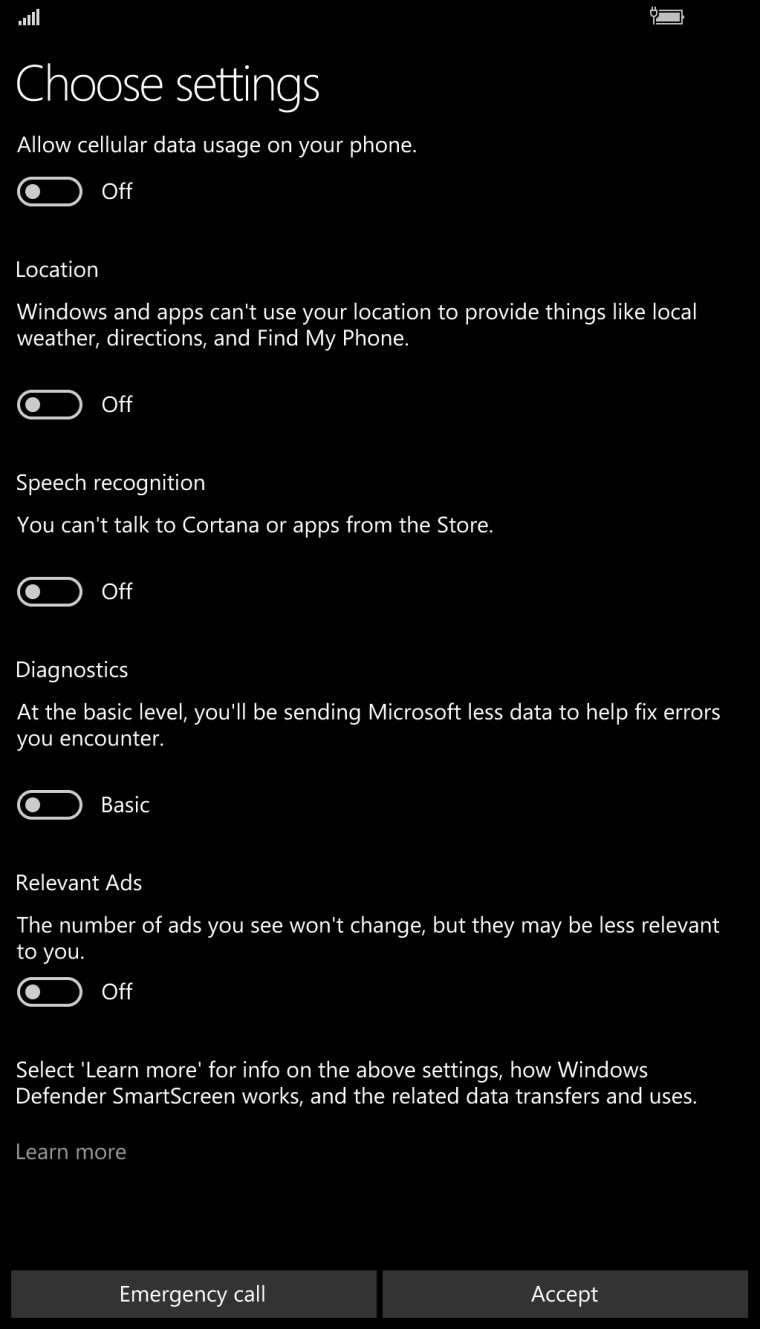
Ever since Windows 10 officially launched in July 2015, Microsoft has had to deal with concerns and - in some cases - suspicions over the amount and types of data that it collects from users' devices. Various authorities and privacy advocates have voiced their concerns too, but in recent months, Microsoft has become far more open in its discussion of those issues.
With the release of its new Windows 10 Creators Update imminent, Microsoft today opened up further on the nature of its data collection in the OS, revealing a much greater level of detail than ever before on the telemetry that it harvests from users' systems.
"For the first time, we have published a complete list of the diagnostic data collected at the Basic level," Microsoft's Windows and Devices Group (WDG) chief Terry Myerson said today. "Individual data points that relate to a specific item or event are collected together and called Events. These are further organized into diagnostic areas. We are also providing a detailed summary of the data we collect from users at both Basic and Full levels of diagnostics."
It's just worth drawing attention to that again, just in case you glossed over it: while Microsoft is providing full details of its Basic data collection, it isn't yet providing the same level of detail for those who enable the Full telemetry mode, offering only a more generalized overview in the form of a 'summary'.
Myerson emphasized Microsoft's "commitment to transparency and your privacy", and said that the company is continuing to evaluate the kinds of data that it actually needs to collect:
Aside from sharing new information to inform your choices, our teams have also worked diligently since the Anniversary Update to re-assess what data is strictly necessary at the Basic level to keep Windows 10 devices up to date and secure. We looked closely at how we use this diagnostic data and strengthened our commitment to minimize data collection at the Basic level. As a result, we have reduced the number of events collected and reduced, by about half, the volume of data we collect at the Basic level.
Microsoft is also introducing more granular privacy controls, details of which it originally announced in January. Those changes followed an investigation that began in 2015 by Switzerland's Federal Data Protection and Information Commissioner; among the various issues highlighted by that probe, authorities said that the default setup experience for Windows 10 enabled a considerable amount of data collection without users being made clearly aware of what was being collected, and why.
Myerson said that as part of its new privacy experience, "everyone will have the opportunity to review their privacy settings" in greater detail, and with clearer explanations to inform each choice made by the user.
Existing Windows 10 users upgrading to the Creators Update will see a privacy settings screen with the new options. The state of each toggle (on/off) will be dependent on your existing settings, rather than all being enabled or disabled by default. Here's what that screen will look like will all of those settings set to 'on':

Below is the same screen with all of the settings toggled to 'off'; note how the explanations for each of those settings has changed to clarify the implications of the user's choice:

Users will be able to adjust those settings at any time via the Privacy section of the Windows 10 Settings app.
As the company previously announced, there will be a new out-of-box setup experience for new PCs or fresh installations of Windows 10, offering the same set of privacy options. One of the biggest differences here is that the OS no longer encourages users to bypass these choices with a 'Get going fast' express setup option, instead presenting them with these options, and offering them the opportunity to learn more.

However, for those new PCs/installations, all of these options will be enabled by default, but users will still be able to turn them off or on as desired. Microsoft said: "We believe the recommended settings will provide you with the richest experience and enable important Windows 10 features to operate most effectively."
Windows 10 Mobile users will see a similar set of options, with one key difference: "the 'Tailored experiences with diagnostic data' setting is automatically turned off for all customers and is not presented as an option on the privacy screen due to limitations of the mobile platform."
Additionally, Microsoft's Marisa Rogers, WDG Privacy Officer, said that Microsoft will be adding voice data to the online privacy dashboard that it launched earlier this year, "so you can review the data we have which improves Cortana's ability to naturally respond to your requests as your personal digital assistant." She added that Microsoft "will continue to refine [its] approach and implement your feedback about data collection and privacy controls" in future updates.
Microsoft is also planning to reveal further details on Windows 10's compliance with the European Union's General Data Protection Regulation. Myerson said that "feedback received from the European Union’s Article 29 Working Party and EU national data protection authorities that have specifically engaged us on Windows 10" - following concerns raised by those groups in February - had played a key part in Microsoft's efforts to improve its privacy practices.
Source: Microsoft



















46 Comments - Add comment